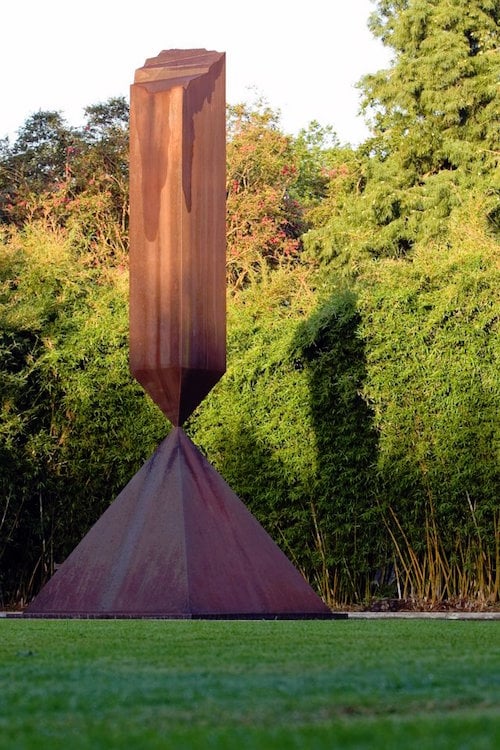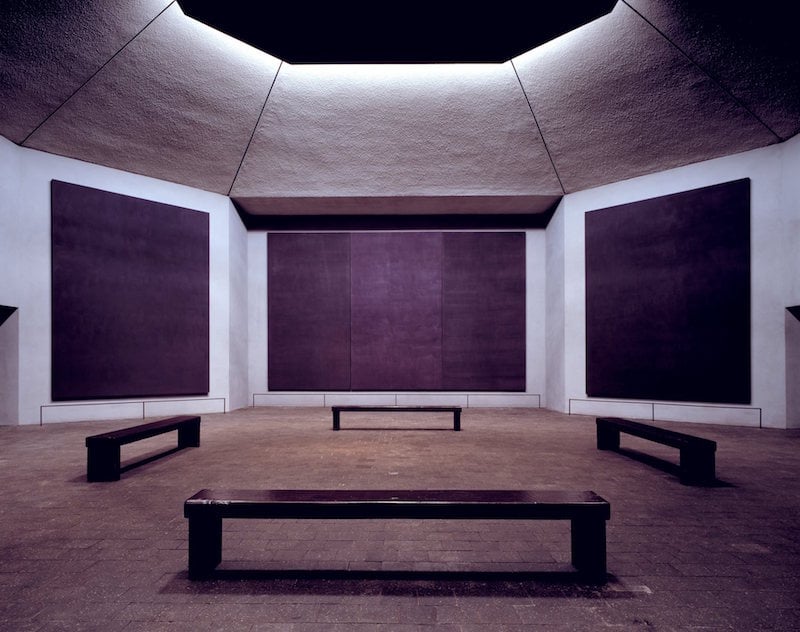Art World
Iconic Barnett Newman Obelisk at Rothko Chapel Set to Undergo Another Restoration
The iconic sculpture is rusting again.
The iconic sculpture is rusting again.
Henri Neuendorf

Barnett Newman’s Broken Obelisk at the Rothko Chapel in Houston, Texas has been removed to undergo essential renovation work, the Houston Chronicle reports.
The sculpture—which is installed in a pool outside of the chapel—has suffered significant degradation from humidity and moisture, with the inside of the sculpture particularly badly effected by the accumulation of rust.
According to Glass Tire, the chapel has indicated that the artwork will undergo a 10-month restoration at its original fabricator in North Haven, Connecticut. It is the third time Broken Obelisk will undergo conservation—repair work has been carried out in 1987 and 2005.
The artwork has a storied past of restoration work. Commissioned by Newman in the 1960s, when monumental metal outdoor sculptures were rare, Broken Obelisk was executed in an edition of four, and all four editions have undergone conservation at least once since then.
But, according to a case study conducted by the Getty Conservation Institute, the Houston version contained several design flaws when it was bought by the arts philanthropists John and Dominique de Menil.

The obelisk is exposed to Houston’s warm climate and humidity.
Photo: David A. Brown
The structural flaws in the early edition at the Rothko Chapel have already required two conservation campaigns to mitigate, partly because of its placement over a reflecting pool.
The first restoration focused on structural alterations including the replacement of the pin system that joined the upper obelisk to the lower pyramid. By its second restoration, the sculpture was suffering from the corrosion of supporting bolts that had faced such prolonged exposure to chlorinated pool water that engineers estimated the sculpture would have faced total structural failure within four years.

The Rothko Chapel is a non-denominational chapel in Houston, TX.
Photo: The Rothko Chapel via Facebook
What’s more, expandable foam injected into the sculpture during its first restoration meant that moisture absorbed by the foam was in direct contact with the sculpture’s interior, causing it to corrode from the inside.
The complex restoration was overseen my a committee of experts who faced the difficult challenge of balancing structural needs with the artwork’s aesthetics and the artist’s intent.
The reflective pool also underwent modifications to alleviate associated problems with exposure to water and moisture.
Conservators now face a similar challenge to stabilize the sculpture without altering the patina and overall appearance of the work.
The chapel and the obelisk were both dedicated to Martin Luther King, Jr. in 1971 at the behest of John and Dominique de Menil. Glass Tire reports that the iconic sculpture, due to be reinstalled by 2017, will be rededicated in a ceremony during next year’s MLK birthday celebration at the chapel.